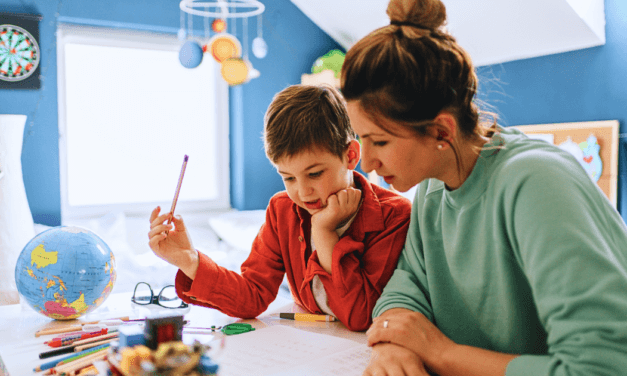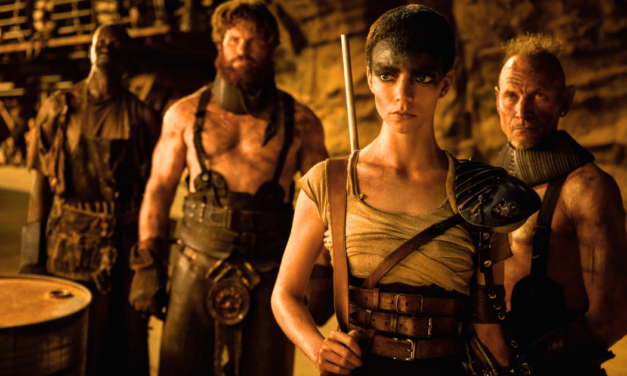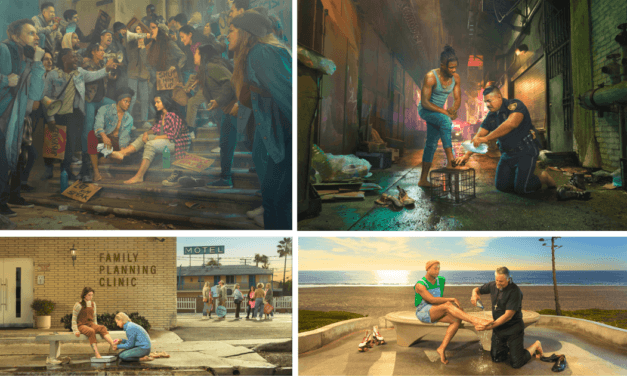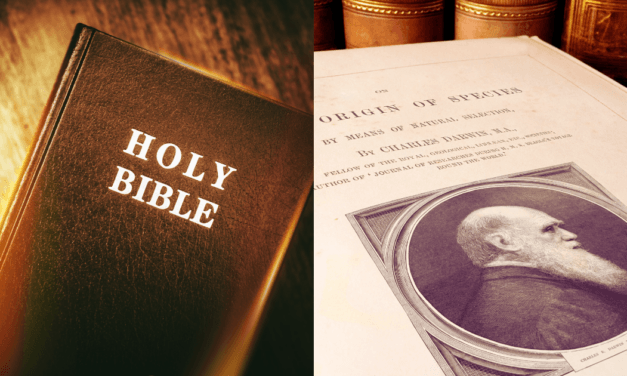When you support the Journal, you join the team and help provide the resources at equip.org that minister to people worldwide. These resources include our ever-growing database of more than 2,000 articles, as well as our free Postmodern Realities podcast.
Another way you can support our online articles is by leaving us a tip. A tip is just a small amount, like $3, $5, or $10, which is the cost of a latte, lunch out, or coffee drink. To leave a tip, click here
According to data from the National Household Education Survey (NHES), 5.4 percent of students in grades K–12 were reported to be homeschooled in 2020–21. That number nearly doubled from statistics of the previous year.1 According to the survey, 75 percent of parents said they chose to homeschool because they wanted to provide moral instruction, and almost 60 percent of parents reported a desire to provide religious instruction. What does it look like to provide a Christian education at home that provides moral and spiritual instruction? If one just adds a Bible class to a typical curriculum, is that a Christian education? Most would agree that a Christian education should include content that adheres to objective truth and presents the reality of the world as defined by Scripture. However, in his book On Christian Teaching, David I. Smith insists that the research on Christian education has exclusively focused on the content while neglecting the pedagogy or methods of teaching. He states, “An account of Christian education that focuses only on the truth of what is taught, and fails to address the meanings molded through how it is taught and learned is at best incomplete….What happens if we shift focus and ask not just what Christian ideas are to be taught, but what might be Christian about the teaching and learning practices among which we invite students to live?” (emphasis in original).2 Likewise, in Desiring the Kingdom, James K. A. Smith contends that Christian education should be more than the “absorption of ideas and information, but about the formation of hearts and desires,” which occurs through the practices and rhythms of how we live and learn (emphasis in original).3 J. K. A. Smith asks, “What if education wasn’t first and foremost about what we know, but about what we love?”4 If the methods and process of learning are just as formative as the content, then educators need to be intentional about the “how” of teaching. Where can parents and teachers find the guidance they need to implement a holistic education that shapes their children spiritually, mentally, and physically?
One source of inspiration being rediscovered in the homeschool and private school world is the British educationalist Charlotte Mason (1842–1923). Many years before David I. Smith and James K. A. Smith asked us to reconsider the premise of Christian education, Mason addressed her readers in a similar vein, “The question is not, — how much does the youth know? when he has finished his education — but how much does he care? and about how many orders of things does he care? In fact, how large is the room in which he finds his feet set? and, therefore, how full is the life he has before him?” (emphasis in original).5 Believing education is more than acquiring knowledge or a steppingstone to a good job, many parents and educators are implementing Mason’s educational model in their homeschools and classrooms. If it wasn’t for Susan Schaeffer Macaulay’s (daughter of Francis Schaeffer) serendipitous encounter with a PNEU (Parents’ National Education Union) school, the name Charlotte Mason may have been lost to the annals of educational history forever. Unbeknownst to her, Schaeffer had put her daughter in a small school in England based on the principles of Mason “where true education was going on,” and her daughter “came home glowing with life and interest” (emphasis in original).6 Schaeffer located Mason’s out-of-print books and shared her insights to an American audience in her book, For the Children’s Sake: Foundations of Education for Home and School (Crossway, 1984). A spark was lit, and slowly, these ideas made their way into home schools and private schools in America and worldwide. If you do a Google search on Charlotte Mason, your results will generate over 95 million entries. What does this Victorian woman have to tell us about education, and why should we heed her advice?
BIOGRAPHY
Mason was born in 1842, in Bangor, Wales. At the age of 16, she became an orphan with both of her parents dying within the span of six months. Like many young girls at that time, Mason did not have many occupations available to her outside of teaching. As a teenager, she became a student pupil and then attended Home and Colonial Training College for teachers, which was a school based on the principles of Pestalozzi, who was considered a more progressive educator compared to the classical model of the day. Then she taught at an infant school and became a lecturer at a teacher training college. In the winter of 1885, Mason was ready to join in on the educational conversation. She offered a series of lectures as a fundraiser for her church, which later became the first volume in her Home Education Series. Mason’s ideas struck many influential women in attendance who later began the first branch of the Parents’ National Education Union in 1887, formed to promote education and child-rearing principles for parents and teachers. In 1892, Mason moved to Ambleside, in the Lake District area of England, to start a teacher training college called the House of Education, which was the only contemporary training school for governesses. The PNEU’s correspondence school was soon launched, which was a curriculum designed by Mason and used by governesses and mothers in their home classrooms and later in many schools across England. She lived in Ambleside tending to all her educational endeavors until the very end of her life.
In her obituary for the British newspaper The Times (1923), the editor referred to Mason as “the pioneer of a new educational method” and said that her influence “was probably more widespread than that of any educationist of her time.”7 At the time of her death in 1923, Mason’s model of education was found in 113 secondary and 211 elementary schools, 33 private PNEU schools, 4000 world-wide home schoolrooms and known to 4000 PNEU members and 30,000 Parents’ Review readers.8 After Mason’s death in 1923, the institutions she founded slowly diminished and were taken over by government-led establishments. The House of Education became the Charlotte Mason College and later an extension of the University of Cumbria. The PNEU schools dwindled over the years until 2012 when they were either all closed or renamed.9
Her practical philosophy of education was arrived at by inductive processes, observations of children, a deep knowledge of Scripture, and close readings of past and contemporary philosophers and educators. Her educational vision is expounded in the more than 1800 pages that comprise her six-volume set titled the Home Education Series. She also wrote a multi-volume work of poetry, Saviour of the World, based on the Gospels, and edited The Parents’ Review, a monthly educational journal. Research about the life and work of Mason continues to be done through the digital and physical archives found in the Armitt Museum on the campus of the University of Cumbria in Ambleside, England.
Mason was not only a practitioner but an educational philosopher who tied every method to an educational principle. Mason said, “There is no part of a child’s work at school which some philosophic principle does not underlie.”9 In her last volume, A Philosophy of Education, which was published posthumously in 1925, she reflected on her work over the years and how her methods had awakened knowledge in the hearts and minds of so many students. She was especially delighted with the results of the children in a small mining town. She writes,
Eight years ago the “soul” of a class of children in a mining village school awoke simultaneously at this magic touch and has remained awake. We know that religion can awaken souls, that love makes a new man, that the call of a vocation may do it, and in the age of the Renaissance, men’s souls, the general soul, awoke to knowledge: but this appeal rarely reaches the modern soul; and, notwithstanding the pleasantness attending lessons and marks in all our schools, I believe the ardour for knowledge in the children of this mining village is a phenomenon that indicates new possibilities….It may be that the souls of all children are waiting for the call of knowledge to awaken them to delightful living.11
What are these principles and methods that awaken children to knowledge and delightful living?
EDUCATIONAL PRINCIPLES
Mason condensed her practical educational philosophy into twenty principles that highlight the distinctiveness of her model of education. Beginning with what she calls “the very crux of our crusade,”12 she states, “Children are born persons.”13 In four words, she lays the foundation for the rest of her philosophy of education, which extends from this belief in the personhood of the child. Mason was well aware of the other voices describing the nature of a child and the pedagogical consequences of adhering to those voices. John Locke (1632–1704) said children’s minds were a tabula rasa (blank slate or empty vessel) that teachers had to fill up. Jean-Jacques Rousseau (1712–1778) believed in the innate goodness of children until they were corrupted by society. He proposed that children should be left alone by teachers to discover truth on their own through their senses. Johann Herbart (1776–1841) believed that a child’s mind was a sac to be filled with specific information pre-selected by the teacher. When Mason states that a child is born a person, she is declaring that “children are born with intelligence, observing powers, moral sensibilities, love and faith, but they lack knowledge of the world and how to make use of the infinite possibilities with which they were born.”14 Their minds are not blank slates to inscribe upon or sacs to be filled with information. She continues, “A child is born a person with a mind as complete and as beautiful as his beautiful little body…always has all the mind he requires for his occasions…his mind is the instrument of his education and his education does not produce his mind” (emphasis in original).15
While most educational theories begin with the content that needs to be mastered or the objectives that need to be reached, Mason begins with the child and the importance of understanding their nature, capabilities, and what they need to flourish. As Mason says, “Our crying need today is less for a better method of education than for an adequate conception of children.”16 This starting point does not lead to a child-centered curriculum based on the temporary interests or whims of students. Mason believed that parents and teachers have a deputed or delegated God-given authority over children and, likewise, children have a responsibility to their authorities to obey willingly. Mason’s impetus to protect the personhood of the child comes from the value and respect that Jesus showed for children when He chided His disciples and said, “Let the little children come to me and do not hinder them, for to such belongs the kingdom of heaven” (Matthew 19:14).17Likewise, Jesus asked, “‘Who is the greatest in the kingdom of heaven?’ And calling to him a child, he put him in the midst of them” (Matthew 18:1–2). The dignity that Jesus gave to children should be impetus for educators to protect the rights of children to have agency in their education.
One of these rights is the freedom of thought. Mason’s 19th principle states, “Children should be taught, as they become mature enough to understand such teaching, that the chief responsibility which rests on them as persons is the acceptance or rejection of ideas. To help them in this choice we give them principles of conduct, and a wide range of the knowledge fitted to them” (emphasis in original).18 As students are exposed to enriching books, authors from various eras, and ideas from across the centuries, students are constantly taking in ideas and holding them captive to the word of God. Mason did not want to take those opportunities away from students and give them ready-made opinions from books or teachers. She valued the minds and abilities of children to do the hard work of taking in ideas from books, to reflect on those ideas over the years and to form their own opinions and make their own connections with humility and grace. Mason believed “what a child digs for is his own possession; what is poured into his ear, like the idle song of a pleasant singer, floats out as lightly as it came in” (emphasis in original).19
When a teacher grasps the truth of this first principle, Mason imagines that the teacher will ask, “‘What have I to offer them?’ His dull routine lessons crumble into the dust they are when he faces children as they are.”20 Worksheets, oral lectures, and informational books full of facts and few ideas will not satisfy the mind-hunger that children have. Mason liked using analogies of food to explain her educational principles. She states, “Like the body, the mind has its appetite, the desire for knowledge. Again, like the body, the mind is able to receive and assimilate by its powers of attention and reflection. Like the body, again, the mind rejects insipid, dry, and unsavory food, that is to say, its pabulum should be presented in a literary form.”21 Mason insisted on the necessity of what she called “living books.” Living books are usually written in a literary or narrative style and written by an expert who has a passion for their topic. Mason understood the power of the narrative form to engage students both mentally and emotionally, since it contains more than facts and includes a story filled with characters, plots, and chronological order. It is through living books that children can awaken to knowledge.
Narration and the Act of Knowing
Knowing that children not only enjoy reading or listening to stories but love telling stories, Mason made narration or retelling the cornerstone of her educational methods. After the reading of a passage, read either aloud or silently, a student tells back the passage as best he can remember using his own words while trying to follow the chronological order of the passage. It is not a summary or a word-for-word recall but a point-by-point retelling of the text. If there is more than one student, they are usually called on in turns, each adding to the narration and not repeating what has already been said. Mason called this practice the “act of knowing.” The teacher does not need to ask recall questions because narration is “the answer to a question put by the mind to itself.”22 Narration allows students to assimilate the knowledge in a way that becomes personal and meaningful to them. The hard work of retelling the passage in one’s own words and making one’s own connections is what Mason calls self-education, which she says is “the only possible education; the rest is mere veneer laid on the surface of a child’s nature.”23 As one student put it, “When we read something we see it only from the author’s perspective and we’re only learning through their eyes. But when we narrate something back, then we can put it into our own words and make the knowledge our own. Then we get to see it through our eyes and it allows us to be part of the learning experience rather than just reading about the author’s experience.”24
A crucial aspect of what it means for a child to be a person is that he is made for relationship. In What Is a Person? Christian Smith defines a person this way: “Persons do not exist first as self-contained selves who subsequently engage and exchange with other selves in order to secure some outcome or consume some benefit. Persons, instead, are originally, constitutively, and inescapably social, interactive, and communicative in origin and being.”25 Mason took this idea of relationship into the realm of education and claims in her 12th principle, “‘Education is the Science of Relations’; that is, that a child has natural relations with a vast number of things and thoughts: so we must train him upon physical exercises, nature lore, handicrafts, science and art, and upon many living books” (emphasis in original).26 The science of relations does not refer to the interconnectedness of ideas and helping students find those connections, but it refers to the natural affinity a person is born with to all domains of life — music, poetry, nature, history, art, science, geography, handworks, math, language. Through exposure to those various areas, students can build relationships with the people from history, the characters of literature, the people and places across the world, the animals in their backyard, and the paintings of artists. Education approached from this standpoint is not about learning information about things and events but building relationships and interests that affect one’s thoughts, attitudes, and actions.
All the subjects in a Mason education could be delineated into three areas of knowledge — knowledge of God, knowledge of humankind, and knowledge of the universe. As students build these relationships with God, humankind, and the universe, they come to recognize one of the key ideas of Mason’s educational vision and her 20th principle, “We should allow no separation to grow up between the intellectual and ‘spiritual’ life of children; but should teach them that the Divine Spirit has constant access to their spirits, and is their continual Helper in all the interests, duties and joys of life.”27 Mason calls all educators to come to this “great recognition, that God the Holy Spirit is Himself, personally, the Imparter of knowledge, the Instructor of youth, the inspirer of Genius.”28 This realization that all fruitful ideas come from the Holy Spirit and all areas of knowledge are worthy to pursue should be a great comfort to those who struggle to reconcile the sacred and secular and how to spend their energy and time. Sensing the discord that many young people had, Mason states,
If all the burning thoughts that stir in the minds of men, all the beautiful conceptions they give birth to, are things apart from God, then we too must have a separate life, a life apart from God, a division of ourselves into secular and religious — discord and unrest. We believe that this is the fertile source of the unfaith of the day, especially in young and ardent minds….But once the intimate relation, the relation of Teacher and taught in all things of the mind and spirit, be fully recognised, our feet are set in a large room; there is space for free development in all directions, and this free and joyous development, whether of intellect or heart, is recognised as a Godward movement.29
What is her answer to this dilemma between the sacred and secular? Her answer is that there is no dilemma. All noble ideas are from the Holy Spirit, and we not only have permission to think about “earthly” things, but it is a Godward movement.
A Distinctive Education
The practical educational philosophy of Mason rises to the challenge of providing a distinctively Christian education in both content and methods. Mason’s principles have stood the test of time because they speak to what is true of the child and the nature of knowledge. However, Mason’s methods should not be frozen in time. Educators need carefully to consider how they can translate her living ideas to the context where they are teaching, so all children can awaken to knowledge and delightful living.
Shannon Whiteside, PhD, is the program director for Charlotte Mason’s Alveary (https://www.alveary.org/), a Charlotte Mason Institute department.
NOTES
- Homeschooled Children and Reasons for Homeschooling, The Condition of Education 2022, National Center for Education Statistics, https://nces.ed.gov/programs/coe/pdf/2022/tgk_508.pdf.
- David I. Smith, On Christian Teaching: Practicing Faith in the Classroom (Grand Rapids, MI: Eerdmans, 2018), 4.
- James K. A. Smith, Desiring the Kingdom: Worship, Worldview, and Cultural Formation (Grand Rapids, MI: Baker Academic, 2009), 17–18.
- James K. A. Smith, Desiring the Kingdom, 18.
- Charlotte M. Mason, School Education (1904; Wheaton, IL: Tyndale House Publishers, 1989), 170–71.
- Susan Schaeffer Macaulay, For the Children’s Sake: Foundations of Education for Home and School (Wheaton, IL: Crossway, 1984), 38–39.
- Obituary of Charlotte Mason, The Times, January 17, 1923, 13.
- H. Boulter, “The Worldwide Education Service: 100 Years of Servicing Parents as Educators,” Educational Review 41, no. 2 (1989): 181–88.
- Margaret Coombs, Charlotte Mason: Hidden Heritage and Educational Influence (Cambridge, UK: The Lutterworth Press, 2015), 309.
- Charlotte M. Mason, Home Education (1886; Wheaton, IL: Tyndale House Publishers, 1989), 240.
- Charlotte M. Mason, Philosophy of Education (1923; Wheaton, IL: Tyndale House Publishers, 1989), xxv.
- Essex Cholmondeley, The Story of Charlotte Mason (Cambridge, UK: The Lutterworth Press, 1960), 94.
- Cholmondeley, The Story of Charlotte Mason, 109.
- Mason, School Education, 172.
- Mason, Philosophy of Education, 36.
- Mason, Philosophy of Education, 80.
- Scripture quotations are from the ESV.
- Mason, Philosophy of Education, xxxi.
- Mason, School Education, 178.
- Mason, Philosophy of Education, 44.
- Mason, Philosophy of Education, 20.
- Mason, Philosophy of Education, 161.
- Mason, Philosophy of Education, 240.
- Victoria, personal correspondence.
- Christian Smith, What Is a Person?: Rethinking Humanity, Social Life, and the Moral Good from the Person Up (Chicago: University of Chicago Press, 2010), 67.
- Mason, Philosophy of Education, xxx.
- Mason, Philosophy of Education, xxxi.
- Mason, School Education, 270–71.
- Charlotte M. Mason, Parents and Children (1896; Wheaton, IL: Tyndale House Publishers, 1989), 275.









